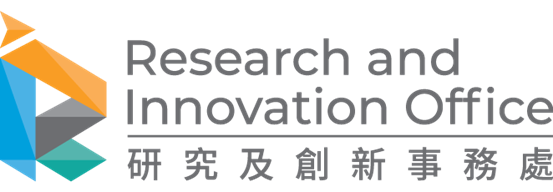Plastic pollution is one of the most pressing environmental challenges, requiring in-depth analytical understanding and advanced technology-driven solutions. Prof. JIN Ling Nathanael, Assistant Professor of the Department of Civil and Environmental Engineering and the Department of Health Technology and Informatics at The Hong Kong Polytechnic University (PolyU), and his team have garnered international recognition for the research that sheds light on the often-overlooked microbial threats linked to plastic waste and provides insights for developing more comprehensive global strategies.
More than 7 billion tonnes of plastic waste have been generated globally so far, with about 80% accumulating in the environment. As plastic waste continues to be produced and degrades at an extremely slow rate, the plastisphere is expanding rapidly. The plastisphere refers to the communities of microorganisms that colonise plastic debris in both aquatic and terrestrial environments.
The plastisphere: an emerging microbial habitat
Prof. JIN’s research provides a comprehensive overview of the plastisphere, revealing its unique and diverse microbial communities, which differ markedly from those in natural environments. By analysing samples from freshwater, seawater, and terrestrial environments worldwide, Prof. JIN’s research team found that these communities consist of fragile networks of specialised microorganisms, rarely encountered in nature, with a pronounced ability to decompose organic compounds, potentially accelerating carbon turnover.
The study also highlights disturbances in the nitrogen cycle, especially in freshwater systems, where bacteria that release harmful substances such as nitrite and nitrous oxide thrive. Moreover, there has been a rise in harmful microorganisms, including pathogens that pose risks to animals, plants, and humans. These findings have been published in The Innovation, titled “Ecology and risks of the global plastisphere as a newly expanding microbial habitat”, which was recognised as the Most Popular Paper from 2020 to 2024.
Prof. JIN said, “Plastic pollution has traditionally been evaluated primarily based on its physical and chemical impacts, such as marine animals becoming entangled in larger debris or fish and seabirds ingesting smaller fragments. However, it is now crucial to consider the microbial threats that plastics harbour. Plastics not only consist of various compounds but also provide nutrients for microbes, which can significantly influence biogeochemical cycling in terrestrial and aquatic environments.”
The research team was also invited to publish a commentary in Nature titled “What are the harmful microorganisms in the world's 7 billion tons of plastic waste?”, offering insights into these critical issues. They indicated the fact that because the plastisphere is composed of plastic fragments ranging from micrometres to several metres in size, it can carry inhabiting microbiomes into ecosystems and the food chain through various pathways.
Recent findings also showed that one square centimetre of the marine plastisphere can host more than 80,000 diatoms. Remarkably, one gram of marine plastic can contain up to ten times the microbial biomass found in a cubic meter of open ocean water. For instance, harmful algae such as Pseudo-nitzschia, which are known for producing the neurotoxin domoic acid responsible for amnesic shellfish poisoning, have also been observed thriving in the plastisphere.
Geographic variation and human activity
The severity of the plastisphere varies by geographic location and is closely linked to regional human activities, development, and environmental management. Additionally, ocean currents can concentrate plastics in specific areas, such as the Great Pacific Garbage Patch, leading to intensified plastisphere activity.
The research team proposed four priorities for a new risk assessment. These include identifying hotspots with close interactions with humans and food security, such as aquaculture farms; protecting vulnerable sites such as wild coral reefs and wetlands, which are crucial for biodiversity, climate regulation, and are highly sensitive to pollution and microbial invasions; and targeting transportation areas where plastics accumulate, such as estuaries, wastewater treatment plants, and long-distance transport vessels. Lastly, special attention must be given to the food chain, as microplastics accumulate in everything from leafy vegetables to seafood, posing a direct threat to human health.
Global cooperation, adapted to local contexts, is essential for effectively mitigating the environmental impacts of plastic pollution. For instance, in Asian cities like Hong Kong, developing a framework to assess plastisphere microbiomes requires tailored strategies that consider unique urban and coastal dynamics. This includes prioritising the monitoring of coastal and urban waterway using advanced technologies such as Geographic Information Systems (GIS), remote sensing, and nano-sensors connected through the Internet of Things (IoT).
Mapping the trajectory of plastic debris
Mapping the trajectory, transport dynamics, and fate of plastic debris carrying microbiomes across ecosystems, regions, and countries is a complex yet achievable task. Prof. JIN said, “It requires extensive international and interdisciplinary collaboration, along with the integration of advanced technology. A crucial component of this project is the standardisation of methods across different research endeavors and the establishment of a global data-sharing framework, both of which are essential for producing consistent, actionable insights.”
Prof. JIN’s team is actively collaborating with global partners to collect plastic samples, create a comprehensive planetary catalogue of hazardous plastisphere microbiomes, and track the flow of associated risks. Additionally, leveraging existing research and models on plastic waste migration, fate, and accumulation, they are developing a model to assess and quantify the microbial impacts of plastic pollution. This model, based on existing plastic presence data and future emission scenarios, and will be validated through simulation experiments.
The potential impacts of this mapping initiative on research and efforts to mitigate plastic pollution are profoundly transformative. Enhanced mapping and tracking will deepen our understanding of microbial migrations on plastics, enabling more accurate risk assessments and targeted interventions in critical areas. Consequently, this data could guide more effective environmental policies and public health strategies, particularly in regions most affected by plastic pollution.
Recently, Prof. JIN has been awarded the 40 Under 40 Recognition Program by the American Academy of Environmental Engineers and Scientists (AAEES) for his contributions to advancing the fields of environmental science.







